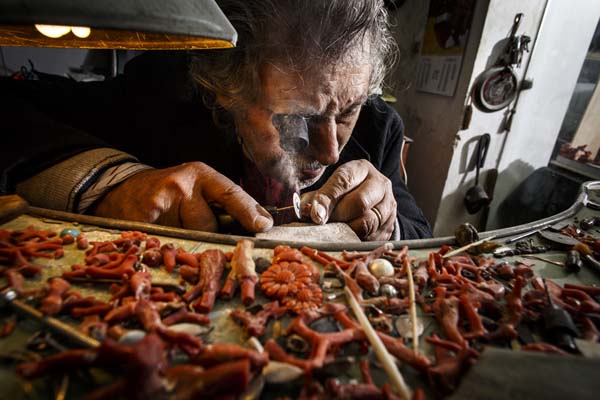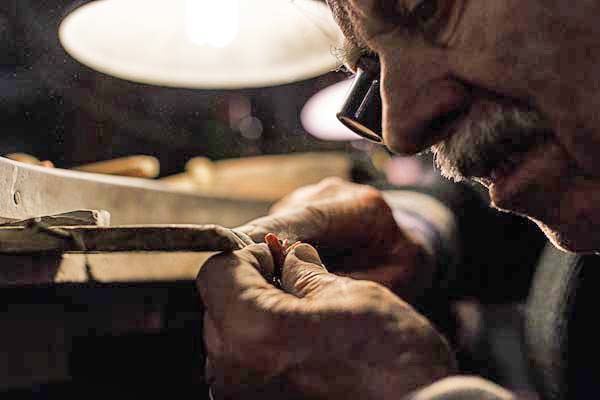Per secoli il corallo é stato oggetto di storie e leggende, secondo Ovidio il corallo rosso nacque dal sangue di una delle Gorgoni, Medusa, quando Perseo la decapitò. Per i cristiani il suo colore rosso ricordava il sangue di Cristo, infatti veniva usato già nel medioevo per i reliquiari della Croce. Il corallo assumeva così la valenza di simbolo della doppia natura di Cristo, umana e divina. La Sicilia é stata la fucina che più ha forgiato i grandi artisti corallai, famosi in tutto il mondo, come Platimiro Fiorenza, ultimo maestro corallaio, che nel 2013 é stato iscritto dall’UNESCO nel registro delle eredità immateriali della Sicilia, il “Libro dei tesori umani viventi”. Nei suoi anni di carriera ha esposto le sue opere nei Musei Vaticani e nel Museo Diocesano di Monreale.
For centuries the coral has been the subject of stories and legends, according to Ovidio, red coral was born from the blood of one of the Gorgons, Medusa, when Perseus beheaded her. For Christians its red color reminded the blood of Christ, it was already being used in medieval times to the reliquaries of the Cross. The coral thus assumed the value of a symbol of the dual nature of Christ, human and divine. Sicily has been the breeding ground that has most shaped the great corallai artists, famous throughout the world, as Platimiro Fiorenza, last corallaio master, that in 2013 was recorded in the register of UNESCO intangible heritage of Sicily, the “Book of living human treasures”. In his years of career has exhibited his work in the Vatican Museums and the Diocesan Museum of Monreale.


